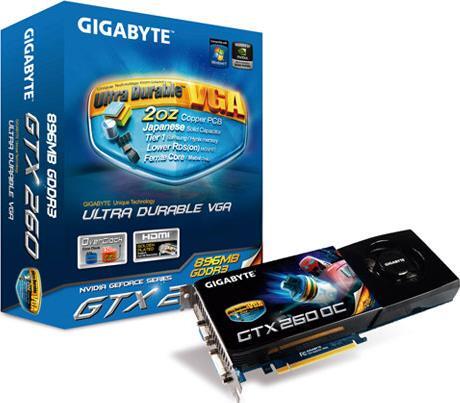GV-N26OC-896I
1/1

- Powered by NVIDIA GeForce GTX 260 GPU
- Supports PCI Express 2.0
- Microsoft DirectX 10 and OpenGL 2.1 support
- Integrated with industry's best 896 MB GDDR3 memory and 448-bit memory interface
- Supports NVIDIA PureVideo® HD technology
- Features Dual link DVI-I / D-sub / HDMI with HDCP protection